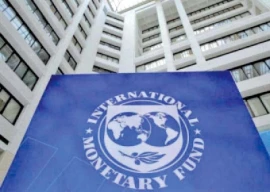
"We think our policy stance is appropriate at the moment; we don't see a strong case for moving it in either direction," Fed Chairman Jerome Powell said in a press conference following the end of the central bank's latest two-day policy meeting.
Overall, he said, "I see us on a good path for this year."
Fed policymakers said ongoing economic growth, a strong labour market and an eventual rise in inflation were still "the most likely outcomes" as the US expansion nears its 10-year mark.
Dollar trapped in ranges on trade war concerns, Fed
"The labour market remains strong ... economic activity rose at a solid rate" in recent weeks, the Fed said in a policy statement a day after President Donald Trump called on it to cut rates by a full percentage point and take other steps to stimulate the economy.
The policy statement, and particularly Powell's insistence the Fed saw no compelling reason to consider a rate cut in response to weak inflation, prompted a modest selloff in stock markets and pushed bond yields higher. The S&P 500 index fell 0.75%, its largest daily decline since mid-March.
Interest rate futures also reversed direction, signaling a lower degree of confidence the next Fed move would be a rate cut, exactly the point Powell was driving at in a "stay-the-course" message, said analysts at Cornerstone Macro.
"Nothing of what the (Federal Open Market Committee) did today ... should be read as a signal that a future change in policy is coming."
The Fed also trimmed the amount of interest it pays banks on excess reserves to 2.35% from 2.40% in an effort to ensure its key overnight lending rate, the federal funds rate, remains within the current target band.
Inflation focus
The chief concern flagged in the policy statement was the currently "muted" level of inflation, which continues to fall short of the Fed's 2% target.
US Fed raises interest rates, signals more hikes ahead
The statement suggested a recent decline in inflation may be more persistent than expected, and was no longer to be blamed simply on falling energy prices.
The most recent data showed a measure of underlying inflation running at 1.6%, which would be a problem if it meant households and businesses had doubts about the economy's strength and were less willing to spend and invest.
Powell told reporters the decline in so-called core inflation was likely mostly due to transient factors, and he predicted it would rise back to the 2% target.

1732437695-0/drake-and-charles-(1)1732437695-0-165x106.webp)


1732434981-0/BeFunky-collage-(10)1732434981-0-165x106.webp)












COMMENTS
Comments are moderated and generally will be posted if they are on-topic and not abusive.
For more information, please see our Comments FAQ